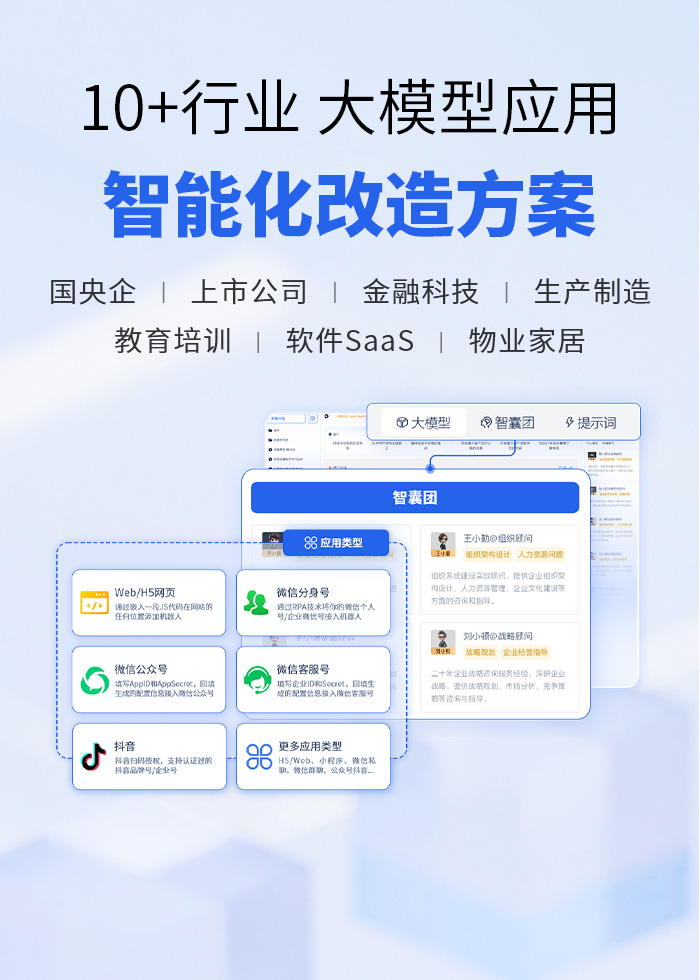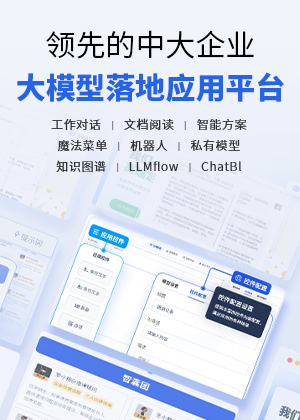本文介绍如何通过Ollama结合Qwen2,搭建OpenAI格式的聊天API,并与外部函数结合来拓展模型的更多功能。
tools是OpenAI的Chat Completion API中的一个可选参数,可用于提供函数调用规范(function specifications)。这样做的目的是使模型能够生成符合所提供的规范的函数参数格式。同时,API 实际上不会执行任何函数调用。开发人员需要使用模型输出来执行函数调用。
Ollama支持OpenAI格式API的tool参数,在tool参数中,如果functions提供了参数,Qwen将会决定何时调用什么样的函数,不过Ollama目前还不支持强制使用特定函数的参数tool_choice。
注:本文测试用例参考OpenAI cookbook:https://cookbook.openai.com/examples/how_to_call_functions_with_chat_models
本文主要包含以下三个部分:
模型部署:使用Ollama和千问,通过设置template,部署支持Function call的聊天API接口。
生成函数参数:指定一组函数并使用 API 生成函数参数。
调用具有模型生成的参数的函数:通过实际执行具有模型生成的参数的函数来闭合循环。
单模型文件下载
使用ModelScope命令行工具下载单个模型,本文使用Qwen2-7B的GGUF格式:
modelscope download --model=qwen/Qwen2-7B-Instruct-GGUF --local_dir . qwen2-7b-instruct-q5_k_m.gguf
Linux环境使用
Liunx用户可使用魔搭镜像环境安装【推荐】
modelscope download --model=modelscope/ollama-linux --local_dir ./ollama-linuxcd ollama-linuxsudo chmod 777 ./ollama-modelscope-install.sh./ollama-modelscope-install.sh
启动Ollama服务
ollama serve
创建ModelFile
复制模型路径,创建名为“ModelFile”的meta文件,其中设置template,使之支持function call,内容如下:
FROM /mnt/workspace/qwen2-7b-instruct-q5_k_m.gguf# set the temperature to 0.7 [higher is more creative, lower is more coherent]PARAMETER temperature 0.7PARAMETER top_p 0.8PARAMETER repeat_penalty 1.05TEMPLATE """{{ if .Messages }}{{- if or .System .Tools }}<|im_start|>system{{ .System }}{{- if .Tools }}# ToolsYou are provided with function signatures within <tools></tools> XML tags. You may call one or more functions to assist with the user query. Don't make assumptions about what values to plug into functions. Here are the available tools:<tools>{{- range .Tools }}{{ .Function }}{{- end }}</tools>For each function call, return a JSON object with function name and arguments within <tool_call></tool_call> XML tags as follows:<tool_call>{"name": <function-name>, "arguments": <args-json-object>}</tool_call>{{- end }}<|im_end|>{{- end }}{{- range .Messages }}{{- if eq .Role "user" }}<|im_start|>{{ .Role }}{{ .Content }}<|im_end|>{{- else if eq .Role "assistant" }}<|im_start|>{{ .Role }}{{- if .Content }}{{ .Content }}{{- end }}{{- if .ToolCalls }}<tool_call>{{ range .ToolCalls }}{"name": "{{ .Function.Name }}", "arguments": {{ .Function.Arguments }}}{{ end }}</tool_call>{{- end }}<|im_end|>{{- else if eq .Role "tool" }}<|im_start|>user<tool_response>{{ .Content }}</tool_response><|im_end|>{{- end }}{{- end }}<|im_start|>assistant{{ else }}{{ if .System }}<|im_start|>system{{ .System }}<|im_end|>{{ end }}{{ if .Prompt }}<|im_start|>user{{ .Prompt }}<|im_end|>{{ end }}<|im_start|>assistant{{ end }}"""
创建自定义模型
使用ollama create命令创建自定义模型
ollama create myqwen2 --file ./ModelFile
运行模型:
ollama run myqwen2
安装依赖
!pip install scipy --quiet!pip install tenacity --quiet!pip install tiktoken --quiet!pip install termcolor --quiet!pip install openai --quiet
使用OpenAI的API格式调用本地部署的qwen2模型
import jsonimport openaifrom tenacity import retry, wait_random_exponential, stop_after_attemptfrom termcolor import coloredMODEL = "myqwen2"client = openai.OpenAI(base_url="http://127.0.0.1:11434/v1",api_key = "None")
实用工具
首先,让我们定义一些实用工具,用于调用聊天完成 API 以及维护和跟踪对话状态。
@retry(wait=wait_random_exponential(multiplier=1, max=40), stop=stop_after_attempt(3))def chat_completion_request(messages, tools=None, tool_choice=None, model=MODEL):try:response = client.chat.completions.create(model=model,messages=messages,tools=tools,tool_choice=tool_choice,)return responseexcept Exception as e:print("Unable to generate ChatCompletion response")print(f"Exception: {e}")return edef pretty_print_conversation(messages):role_to_color = {"system": "red","user": "green","assistant": "blue","function": "magenta",}for message in messages:if message["role"] == "system":print(colored(f"system: {message['content']}\n", role_to_color[message["role"]]))elif message["role"] == "user":print(colored(f"user: {message['content']}\n", role_to_color[message["role"]]))elif message["role"] == "assistant" and message.get("function_call"):print(colored(f"assistant: {message['function_call']}\n", role_to_color[message["role"]]))elif message["role"] == "assistant" and not message.get("function_call"):print(colored(f"assistant: {message['content']}\n", role_to_color[message["role"]]))elif message["role"] == "function":print(colored(f"function ({message['name']}): {message['content']}\n", role_to_color[message["role"]]))
基本概念(https://cookbook.openai.com/examples/how_to_call_functions_with_chat_models#basic-concepts)
这里假设了一个天气 API,并设置了一些函数规范和它进行交互。将这些函数规范传递给 Chat API,以便模型可以生成符合规范的函数参数。
tools = [{"type": "function","function": {"name": "get_current_weather","description": "Get the current weather","parameters": {"type": "object","properties": {"location": {"type": "string","description": "The city and state, e.g. San Francisco, CA",},"format": {"type": "string","enum": ["celsius", "fahrenheit"],"description": "The temperature unit to use. Infer this from the users location.",},},"required": ["location", "format"],},}},{"type": "function","function": {"name": "get_n_day_weather_forecast","description": "Get an N-day weather forecast","parameters": {"type": "object","properties": {"location": {"type": "string","description": "The city and state, e.g. San Francisco, CA",},"format": {"type": "string","enum": ["celsius", "fahrenheit"],"description": "The temperature unit to use. Infer this from the users location.",},"num_days": {"type": "integer","description": "The number of days to forecast",}},"required": ["location", "format", "num_days"]},}},]如果我们向模型询问当前的天气情况,它将会反问,希望获取到进一步的更多的参数信息。
messages = []messages.append({"role": "system", "content": "Don't make assumptions about what values to plug into functions. Ask for clarification if a user request is ambiguous."})messages.append({"role": "user", "content": "hi ,can you tell me what's the weather like today"})chat_response = chat_completion_request(messages, tools=tools)assistant_message = chat_response.choices[0].messagemessages.append(assistant_message)assistant_messageChatCompletionMessage(content='Of course, I can help with that. To provide accurate information, could you please specify the city and state you are interested in?', role='assistant', function_call=None, tool_calls=None)
一旦我们通过对话提供缺失的参数信息,模型就会为我们生成适当的函数参数。
messages.append({"role": "user", "content": "I'm in Glasgow, Scotland."})chat_response = chat_completion_request(messages, tools=tools)assistant_message = chat_response.choices[0].messagemessages.append(assistant_message)assistant_messageChatCompletionMessage(content='', role='assistant', function_call=None, tool_calls=[ChatCompletionMessageToolCall(id='call_qq8e5z9w', function=Function(arguments='{"location":"Glasgow, Scotland"}', name='get_current_weather'), type='function')])
通过不同的提示词,我们可以让它反问不同的问题以获取函数参数信息。
messages = []messages.append({"role": "system", "content": "Don't make assumptions about what values to plug into functions. Ask for clarification if a user request is ambiguous."})messages.append({"role": "user", "content": "can you tell me, what is the weather going to be like in Glasgow, Scotland in next x days"})chat_response = chat_completion_request(messages, tools=tools)assistant_message = chat_response.choices[0].messagemessages.append(assistant_message)assistant_messageChatCompletionMessage(content='Sure, I can help with that. Could you please specify how many days ahead you want to know the weather forecast for Glasgow, Scotland?', role='assistant', function_call=None, tool_calls=None)
messages.append({"role": "user", "content": "5 days"})chat_response = chat_completion_request(messages, tools=tools)chat_response.choices[0]Choice(finish_reason='stop', index=0, logprobs=None, message=ChatCompletionMessage(content='', role='assistant', function_call=None, tool_calls=[ChatCompletionMessageToolCall(id='call_b7f3j7im', function=Function(arguments='{"location":"Glasgow, Scotland","num_days":5}', name='get_n_day_weather_forecast'), type='function')]))
并行函数调用(https://cookbook.openai.com/examples/how_to_call_functions_with_chat_models#parallel-function-calling)
支持一次提问中,并行调用多次函数
messages = []messages.append({"role": "system", "content": "Don't make assumptions about what values to plug into functions. Ask for clarification if a user request is ambiguous."})messages.append({"role": "user", "content": "what is the weather going to be like in San Francisco and Glasgow over the next 4 days"})chat_response = chat_completion_request(messages, tools=tools, model=MODEL)assistant_message = chat_response.choices[0].message.tool_callsassistant_message
[ChatCompletionMessageToolCall(id='call_vei89rz3', function=Function(arguments='{"location":"San Francisco, CA","num_days":4}', name='get_n_day_weather_forecast'), type='function'),
ChatCompletionMessageToolCall(id='call_4lgoubee', function=Function(arguments='{"location":"Glasgow, UK","num_days":4}', name='get_n_day_weather_forecast'), type='function')]
使用模型生成函数(https://cookbook.openai.com/examples/how_to_call_functions_with_chat_models#how-to-call-functions-with-model-generated-arguments)
在这个示例中,演示如何执行输入由模型生成的函数,并使用它来实现可以为我们解答有关数据库的问题的代理。
本文使用Chinook 示例数据库(https://www.sqlitetutorial.net/sqlite-sample-database/)。
指定执行 SQL 查询的函数(https://cookbook.openai.com/examples/how_to_call_functions_with_chat_models#specifying-a-function-to-execute-sql-queries)
首先,让我们定义一些有用的函数来从 SQLite 数据库中提取数据。
import sqlite3conn = sqlite3.connect("data/Chinook.db")print("Opened database successfully")
def get_table_names(conn):"""Return a list of table names."""table_names = []tables = conn.execute("SELECT name FROM sqlite_master WHERE type='table';")for table in tables.fetchall():table_names.append(table[0])return table_namesdef get_column_names(conn, table_name):"""Return a list of column names."""column_names = []columns = conn.execute(f"PRAGMA table_info('{table_name}');").fetchall()for col in columns:column_names.append(col[1])return column_namesdef get_database_info(conn):"""Return a list of dicts containing the table name and columns for each table in the database."""table_dicts = []for table_name in get_table_names(conn):columns_names = get_column_names(conn, table_name)table_dicts.append({"table_name": table_name, "column_names": columns_names})return table_dicts
现在可以使用这些实用函数来提取数据库模式的表示。
database_schema_dict = get_database_info(conn)database_schema_string = "\n".join([f"Table: {table['table_name']}\nColumns: {', '.join(table['column_names'])}"for table in database_schema_dict])与之前一样,我们将为希望 API 为其生成参数的函数定义一个函数规范。请注意,我们正在将数据库模式插入到函数规范中。这对于模型了解这一点很重要。
tools = [{"type": "function","function": {"name": "ask_database","description": "Use this function to answer user questions about music. Input should be a fully formed SQL query.","parameters": {"type": "object","properties": {"query": {"type": "string","description": f"""SQL query extracting info to answer the user's question.SQL should be written using this database schema:{database_schema_string}The query should be returned in plain text, not in JSON.""",}},"required": ["query"],},}}]执行 SQL 查询(https://cookbook.openai.com/examples/how_to_call_functions_with_chat_models#executing-sql-queries)
现在让我们实现实际执行数据库查询的函数。
def ask_database(conn, query):"""Function to query SQLite database with a provided SQL query."""try:results = str(conn.execute(query).fetchall())except Exception as e:results = f"query failed with error: {e}"return results使用 Chat Completions API 调用函数的步骤:
(https://cookbook.openai.com/examples/how_to_call_functions_with_chat_models#steps-to-invoke-a-function-call-using-chat-completions-api)
步骤 1:向模型提示可能导致模型选择要使用的工具的内容。工具的描述(例如函数名称和签名)在“工具”列表中定义,并在 API 调用中传递给模型。如果选择,函数名称和参数将包含在响应中。
步骤 2:通过编程检查模型是否想要调用函数。如果是,则继续执行步骤 3。
步骤 3:从响应中提取函数名称和参数,使用参数调用该函数。将结果附加到消息中。
步骤 4:使用消息列表调用聊天完成 API 以获取响应。
messages = [{"role":"user","content": "What is the name of the album with the most tracks?"}]response = client.chat.completions.create(model='myqwen2',messages=messages,tools= tools,tool_choice="auto")# Append the message to messages listresponse_message = response.choices[0].messagemessages.append(response_message)print(response_message)
ChatCompletionMessage(content='', role='assistant', function_call=None, tool_calls=[ChatCompletionMessageToolCall(id='call_23nnhlv6', function=Function(arguments='{"query":"SELECT Album.Title FROM Album JOIN Track ON Album.AlbumId = Track.AlbumId GROUP BY Album.Title ORDER BY COUNT(*) DESC LIMIT 1"}', name='ask_database'), type='function')])
# Step 2: determine if the response from the model includes a tool call.tool_calls = response_message.tool_callsif tool_calls:# If true the model will return the name of the tool / function to call and the argument(s)tool_call_id = tool_calls[0].idtool_function_name = tool_calls[0].function.nametool_query_string = json.loads(tool_calls[0].function.arguments)['query']# Step 3: Call the function and retrieve results. Append the results to the messages list.if tool_function_name == 'ask_database':results = ask_database(conn, tool_query_string)messages.append({"role":"tool","tool_call_id":tool_call_id,"name": tool_function_name,"content":results})# Step 4: Invoke the chat completions API with the function response appended to the messages list# Note that messages with role 'tool' must be a response to a preceding message with 'tool_calls'model_response_with_function_call = client.chat.completions.create(model="myqwen2",messages=messages,)# get a new response from the model where it can see the function responseprint(model_response_with_function_call.choices[0].message.content)else:print(f"Error: function {tool_function_name} does not exist")else:# Model did not identify a function to call, result can be returned to the userprint(response_message.content)
The album "Greatest Hits" contains the most tracks

































 粤ICP备14082021号
粤ICP备14082021号